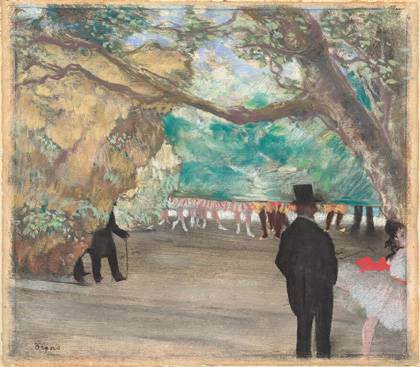
Edgar Degas, “The Curtain“, c. 1880, pastel over charcoal and monotype on laid paper mounted on board,
sheet: 29 x 33.3 cm (11 7/16 x 13 1/8 in.), National Gallery of Art, Washington, Collection of Mr. and Mrs. Paul Mellon
Degas at the Opéra – NGA Washington Celebrating the 350th anniversary of the Paris Opéra’s founding, ‘Degas at the Opéra’ presents approximately 100 of the artist’s best-known and beloved works in a range of media. National Gallery of Art, Washington, July 20 – October 12, 2020.]]>
Source: National Gallery of Art, Washington
An exuberant display of fecund imagination and keen observation, Edgar Degas’s renowned images of the Paris Opéra are among the most sophisticated and visually compelling works he ever created. The exhibition presents 100 works in a range of media, including paintings, pastels, drawings, prints, and sculpture. It is accompanied by a fully illustrated exhibition catalog.
Degas (1834–1917) is celebrated as the painter of dancers, a subject that dominated his art for nearly four decades. Although there have been many exhibitions celebrating his love of the ballet, this will be the first to consider his enduring fascination with the opéra. A music lover and regular visitor to performances, Degas explored both the public spaces of the Paris Opéra—auditorium, stage, and boxes—as well as more private ones, including dance studios and backstage. He was friends with many of the people he depicted in his paintings, from dancers, singers, and orchestra musicians to the dark-suited subscribers.
The Opéra also fueled some of Degas’s most daring technical innovations, including his first monotype, “The Ballet Master” (c. 1876), and his wax statue “Little Dancer Aged Fourteen” (1881), which revolutionized sculpture.
Related content
Degas: Russian Dancers and Art of Pastel at the Getty (exhibition, 2015)
Follow us on:


